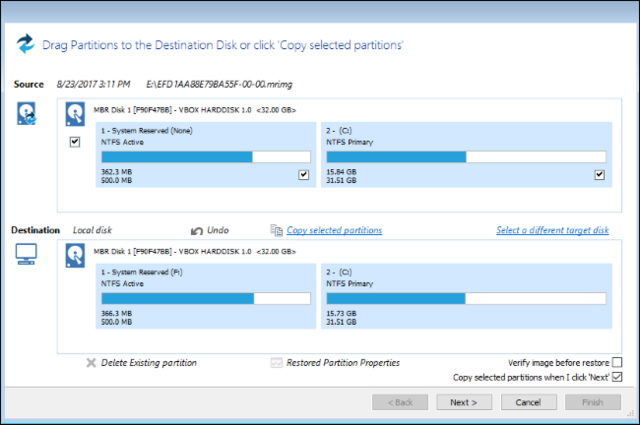
If that file isn’t co-located in your regular file backup system and exists only in your drive image then you need a way to get at that file without writing the entire image to a new drive. Let’s say, for example, you followed one of our tutorials that uses Macrium Reflect, like How to Create an Image of Your PC Before Upgrading to Windows 10, and then some time later you realize there was a file in your /Downloads/ folder that you really needed. But best practice isn’t always the practice we follow and sometimes you need a file trapped inside a disk image.
:max_bytes(150000):strip_icc()/010-how-to-create-a-recovery-drive-for-any-version-of-windows-fb3bf94346134e18863ec7d940b7834f.jpg)
Ideally you have parallel backup practices: one backup workflow for things like /My Documents/ and your photos and a tandem backup process for your entire system drive so you can restore your computer in the event of a failure or serious problem. Read on as we show you how to mount a Macrium Reflect backup image as a Windows drive. Now and then you may find you need to mount a drive image you’ve created to retrieve a file or two. with System Scheduler:ĭel. Q:\Backup.Generally speaking you image an entire drive to do a drive-at-a-time backup and restoration. With this method you give the new backup in the folder "Drive.\Backup-Folder"

My personal solution for this cleanup-task is a batch-file 2-Files.bat for the cleanup. Keep only a maximum of X full backups with Macrium Relect Free Eddition and a bat-file Macrium Reflect Free Edition is the best free disk-image-application for 32+64 bit Windows XP, Vista and Windows 7, but it cannot clean up old backup-images automatically, as the Standard-, PRO- and Server-Editions of Macrium Reflect or the commercial products Acronis True Image or Norton Ghost do.įor the automatical cleaning up of old backup files with Macrium Reflect Free Edition to prevent the hard disk from being overfilled, I use this method:


 0 kommentar(er)
0 kommentar(er)
